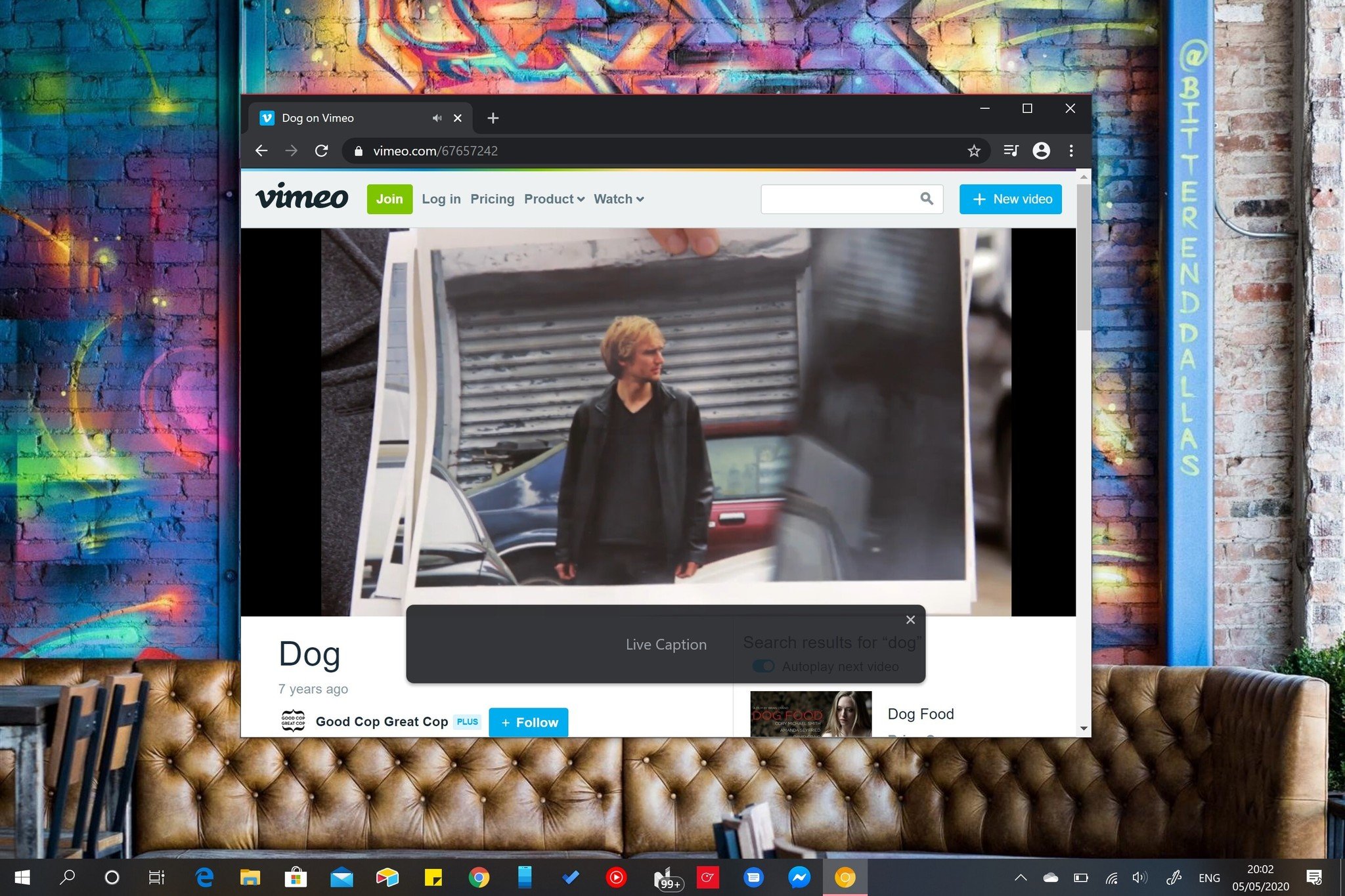Google's Live Caption is now rolling out to Chrome on desktop - Android
The feature made its debut as a Pixel 4-exclusive in 2019.

Update, March 17 (10:55 am ET): Live Caption is now rolling out to Chrome users.
What you need to know
- Google's Live Caption feature can now be activated in Chrome on Windows, macOS, and Chrome OS platforms.
- It is listed as an experimental feature currently, so there are a few bugs.
- The feature is likely to be officially released for everyone sometime later this year.
Google has been working on bringing Live Captions to other platforms for almost a year now. While the feature hasn't been officially released for Chrome yet, Google has quietly added Live Caption as a hidden feature for the Windows, macOS, and Chrome OS versions of Chrome (via ChromeStory). Once you enable Live Caption on your device, you will be able to toggle it on or off from the media controls menu on the toolbar.
To activate Live Caption in Chrome, paste chrome://flags/#enable-accessibility-live-caption into the search bar and search for Live Caption. After you enable Live Caption, you will have to restart Chrome to be able to do start using it. Once Chrome relaunches, you will see a small bar along the bottom with live captions when you play a video or a podcast. Since Live Caption is still an experimental feature on desktop platforms, it doesn't yet work with YouTube on the stable channel.
You may have to restart the feature if you pause a video, as transcriptions can sometimes stop appearing as expected. It is also worth noting that the feature currently doesn't work with Linux or Android apps on Chromebooks.
Since the feature isn't entirely bug-free yet, it could take a few more months for the feature to be officially released.
Update, March 17 (10:55am ET) ― Google finally brings Live Caption to Chrome on desktop
As reported by XDA Developers, Google is now rolling out its Live Caption feature to Chrome users on desktop with the latest stable release. Once you install Chrome 89, you will be able to access the feature from Settings > Advanced > Accessibility. In case you still don't see the Live Caption toggle, you should be able to get it to work by restarting Chrome once.
17/03/2021 02:54 PM
Microsoft Surface Duo 2 expected to launch later this year
17/03/2021 08:52 AM
New swipe gesture found in Android 12 Developer Preview 2
17/03/2021 08:02 PM
Samsung announces sequels to last year's smash-hit Galaxy A-series phones
17/03/2021 02:00 PM
Android 12 DP2 Introduces Another Media Player UI Change
17/03/2021 10:31 PM
Unagi's take-home scooter subscription service expands to six new cities
17/03/2021 02:00 PM
Samsung Galaxy A52 5G and Galaxy A72 5G colors - which color should you buy
17/03/2021 09:10 AM
- Comics
- HEALTH
- Libraries & Demo
- Sports Games
- Racing
- Cards & Casino
- Media & Video
- Photography
- Transportation
- Arcade & Action
- Brain & Puzzle
- Social
- Communication
- Casual
- Personalization
- Tools
- Medical
- Weather
- Shopping
- Health & Fitness
- Productivity
- Books & Reference
- Finance
- Entertainment
- Business
- Sports
- Music & Audio
- News & Magazines
- Education
- Lifestyle
- Travel & Local







